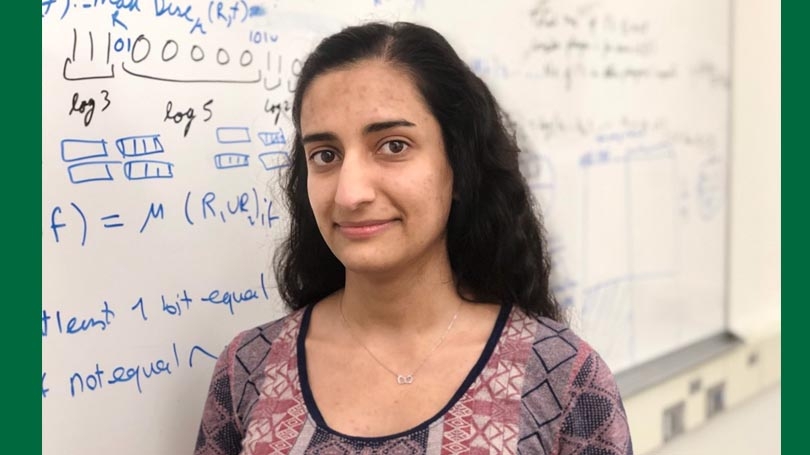
Maryam Neghabani is a PhD candidate in the Computer Science department at Dartmouth
This is part of a series of articles profiling up-and-coming female STEM graduate students on Dartmouth’s campus, in recognition of International Women’s Day on March 8th.
Amongst adolescent girls in the U.S., computer science (CS) is perceived a masculine field (Master, Cheryan et al. 2016), leading to low numbers of girls and women pursuing CS degrees (National Science Foundation 2017), and widespread perception that they are simply uninterested (Fisher, Margolis et al. 1997). The experiences of Maryam Neghabani, one of two theoretical computer scientists in her graduate cohort at Dartmouth, defy those stereotypes.
“I remember trying to convince my friend Sarah to stay in computer science,” recalls Maryam, “‘No, please take computer science, it’s good for you!’ I would tell her. I begged and begged and begged. But she ended up an electrical engineer.” Maryam has never questioned her abilities in this field. She demonstrated an early interest in programming competitions and her undergraduate theoretical CS classes were dominated by females. Maryam is from Iran and chalks her experiences up to her culture and upbringing. “Boys are better at this, girls are better at that- it doesn’t happen in Iran,” she says, “because you’re expected to be good at everything.”
Maryam is a 2nd year PhD student in Deeparnab Chakrabarty’s group, but her background in theoretical computer science is impressive. She possesses both bachelors and masters degrees in the field, and is now conducting research on approximation algorithms. “I’ve been interested in computer science since high school. During extracurricular classes at student research institutes, I tried my hand at robotics. I found it to be a bit frustrating- my code wasn’t the problem, the hardware was. This probably informed my pursuit of theoretical work. You don’t need as many resources, and its easy, straightforward work,” she explains.
Things haven’t always been straightforward. Arriving in Hanover in 2017 was Maryam’s first journey to the U.S. She experienced difficulty obtaining housing as an international student, having to jump between colleagues’ houses until she could sign a lease. She laughs as she recalls her many mistakes while figuring out Advance Transit. Despite these initial bumps, she feels overwhelming gratitude for her advisor and peers in the Department of Computer Science, who have made the small town feel like home. Maryam points to increased intradepartmental collaboration as a way in which her experience at Dartmouth could be improved: “I would love to have an easy way to identify other researchers with similar interests, so that productive collaborations could be formed.”
Maryam is a determined, highly focused computer scientist with many years of great success in front of her. Though recruitment and retention of women in the field of computer science remains, perhaps Maryam’s approximation algorithms will create solutions to answer this most difficult and persistent problem.
Bibliography
Fisher, A., J. Margolis and F. Miller (1997). "Undergraduate women in computer science: experience, motivation and culture." ACM SIGCSE Bulletin 29(1): 106-110.
Master, A., S. Cheryan and A. N. Meltzoff (2016). "Computing whether she belongs: Stereotypes undermine girls’ interest and sense of belonging in computer science." Journal of Educational Psychology 108(3): 424.
National Science Foundation (2017). Women, Minorities, and Persons with Disabilities in Science and Engineering: 2017. Special Report NSF 17-310. Arlington, VA, National Center for Science and Engineering Statistics.